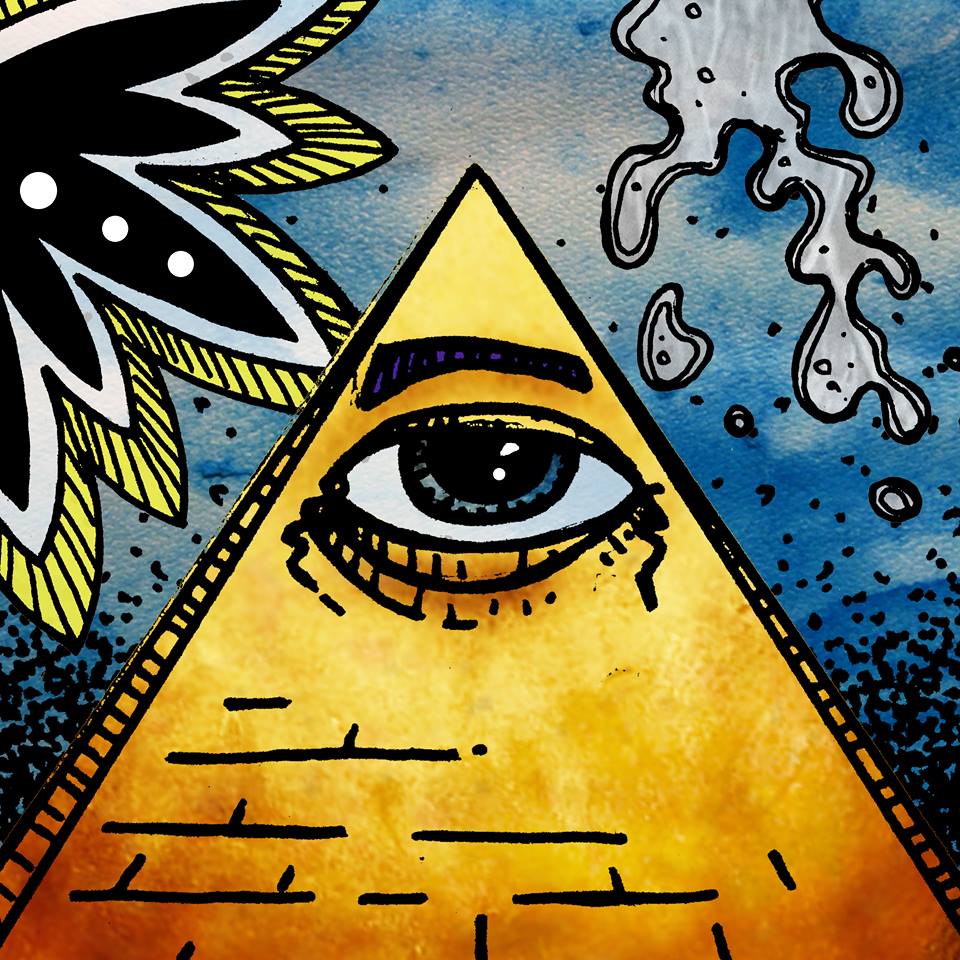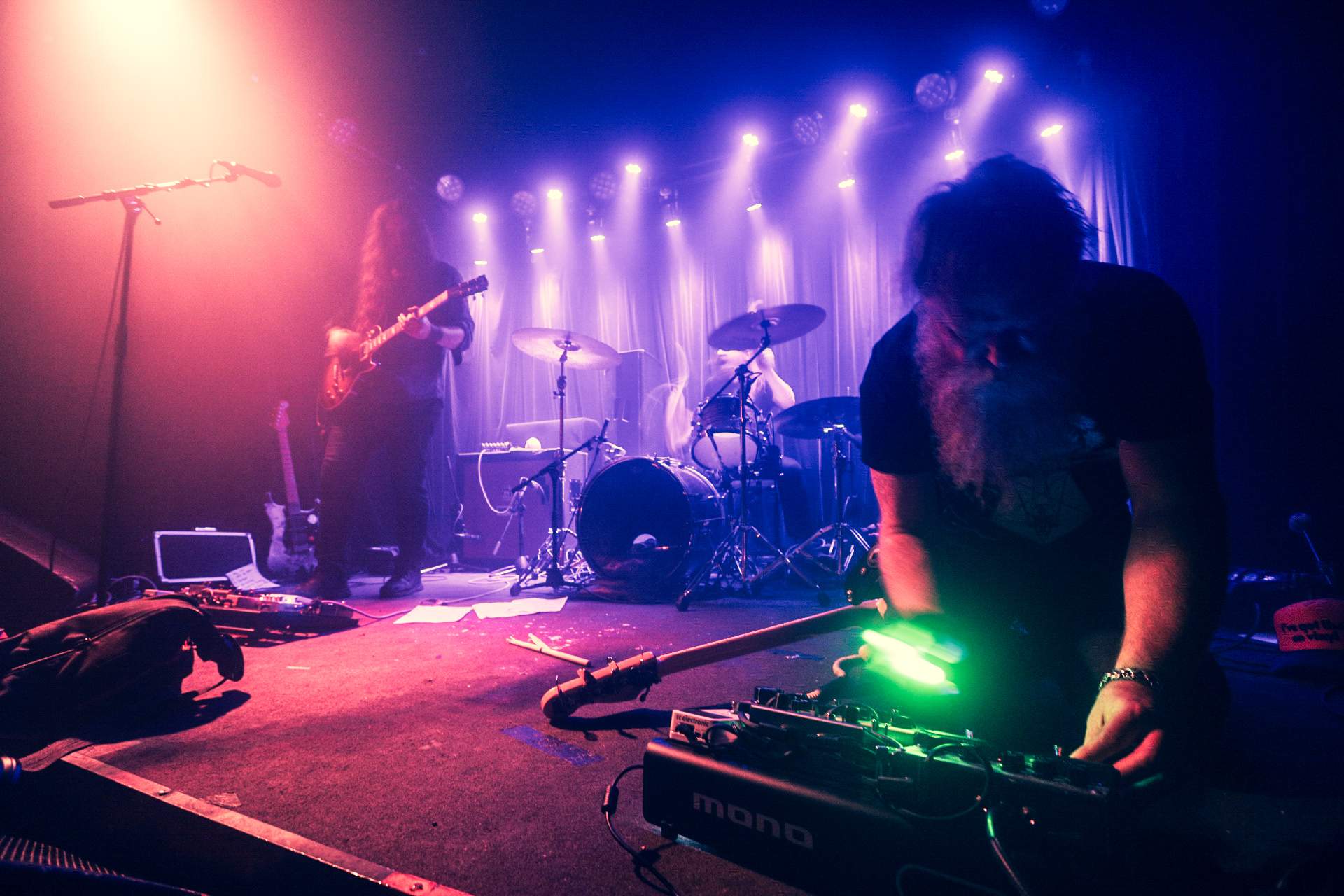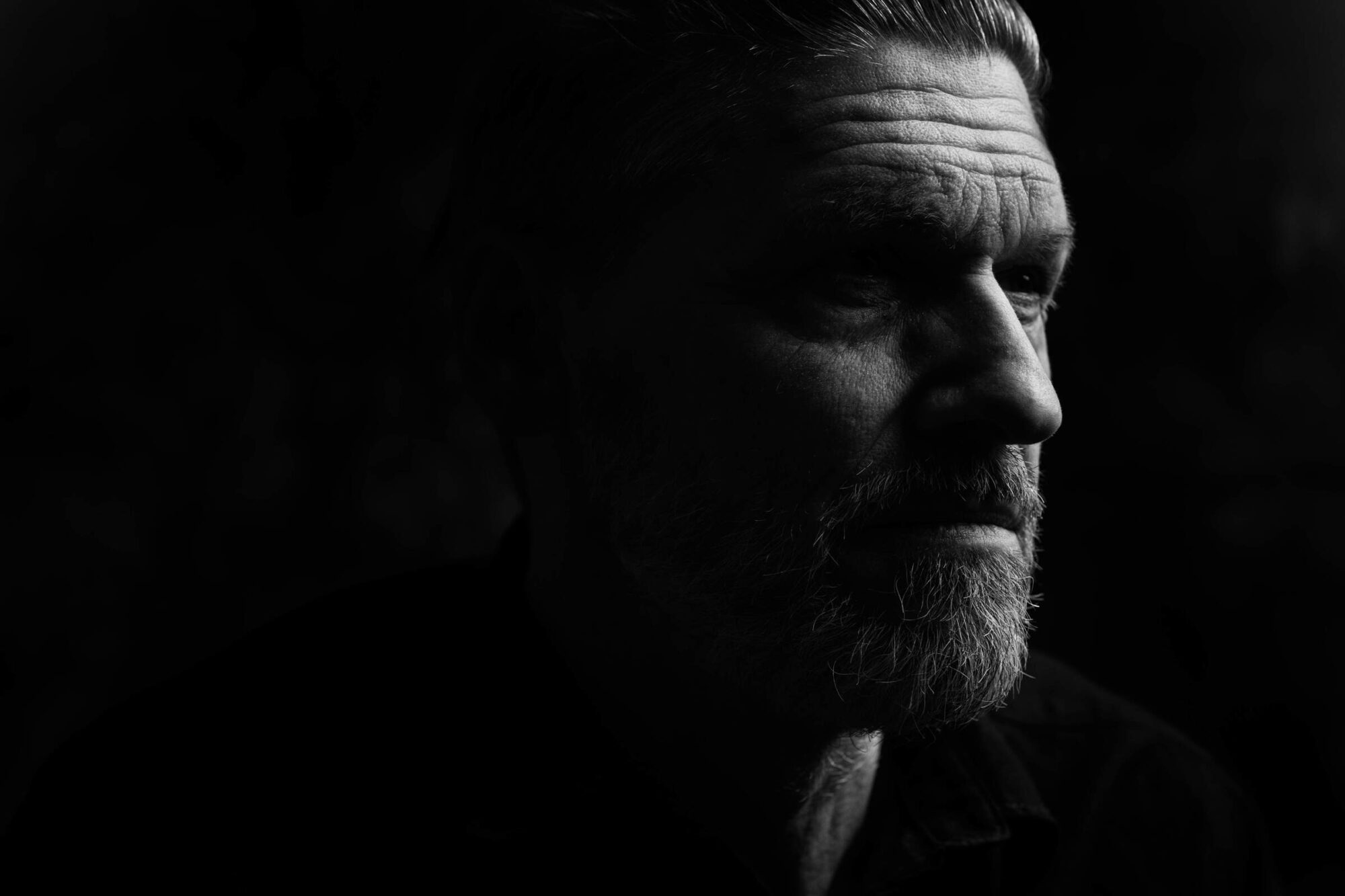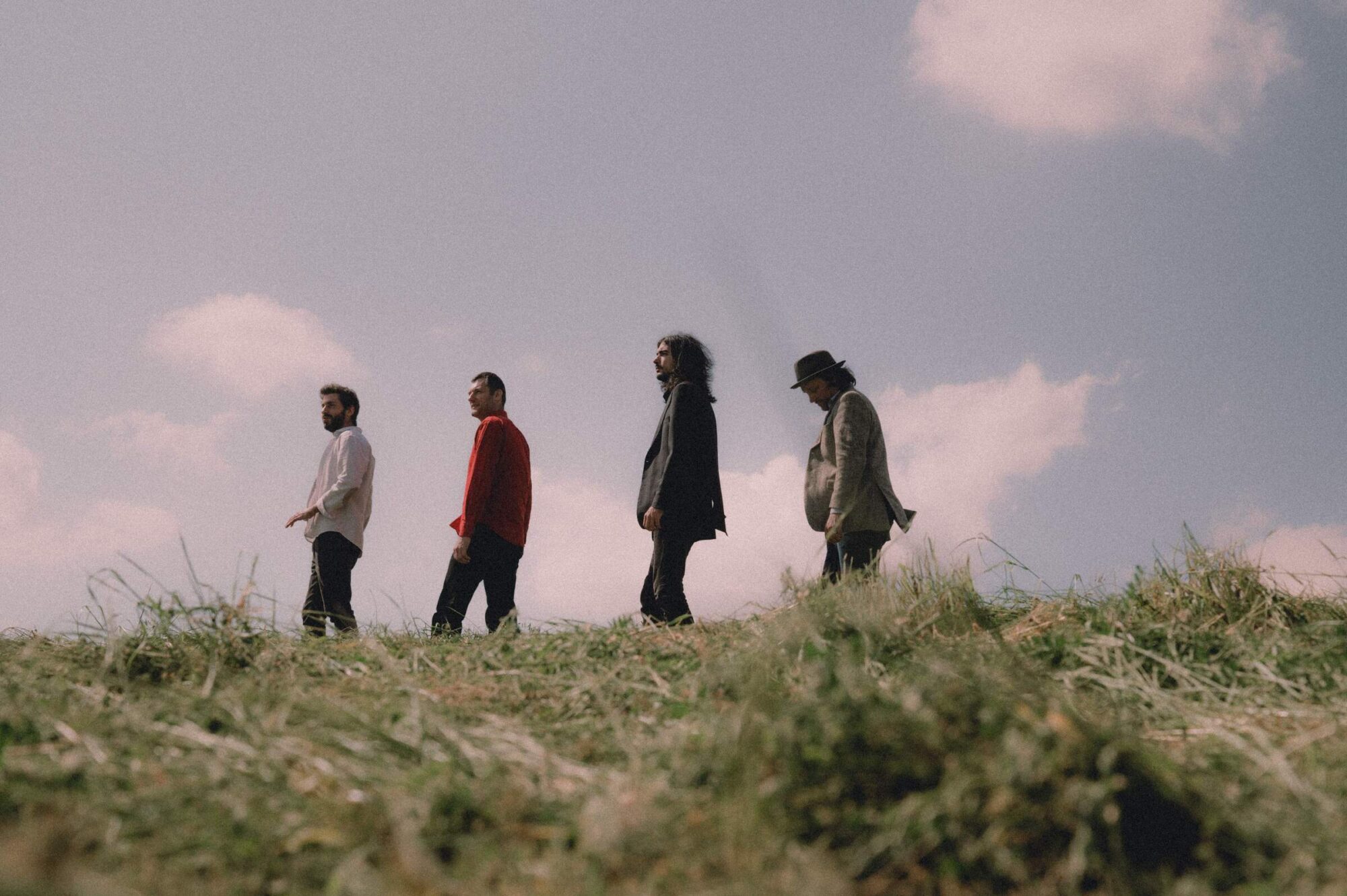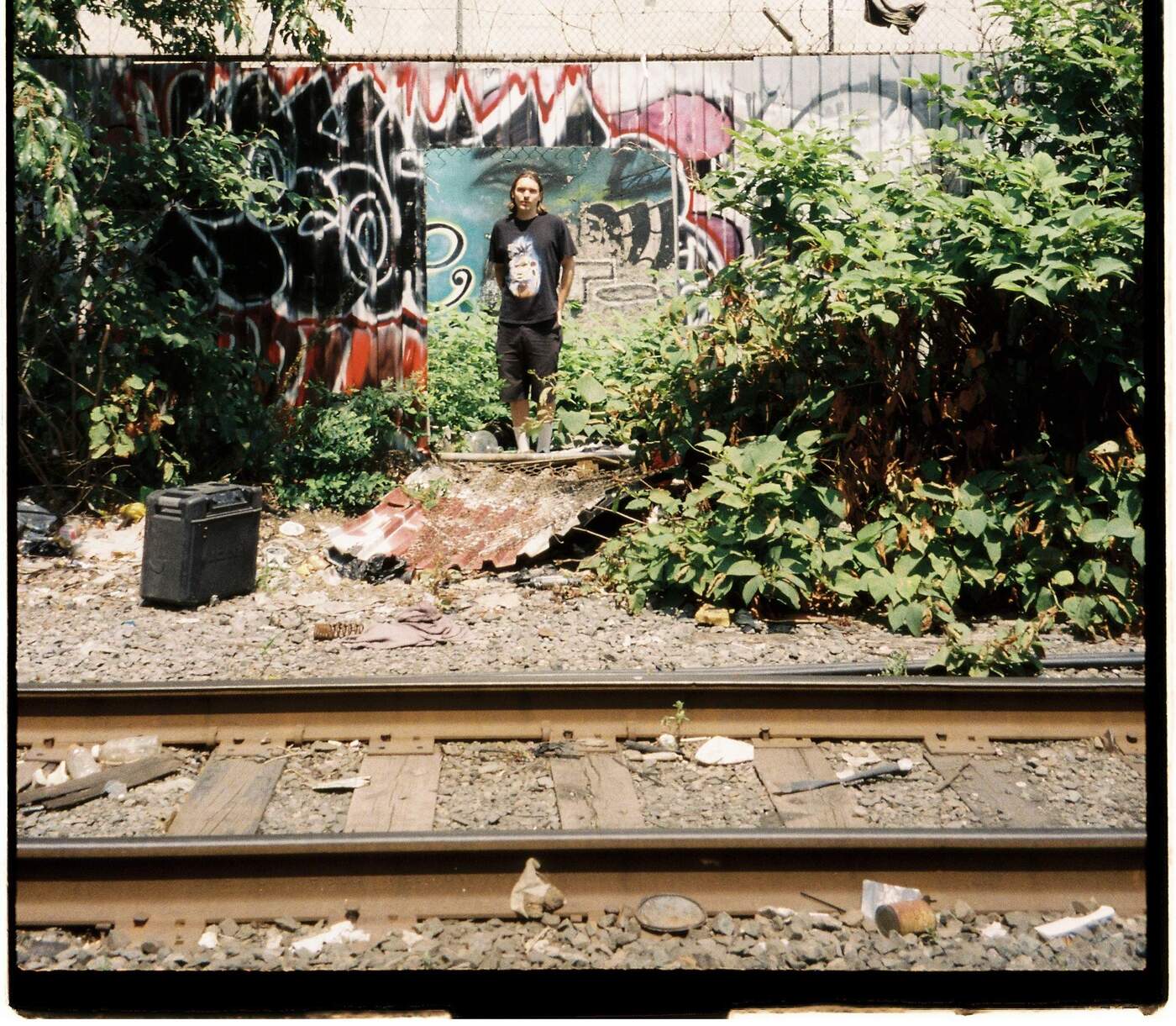Seedy Jeezus Interview: Diving Into the New Album, ‘Damned to the Depths’
Seedy Jeezus have long combined heavy, riff-driven sound with expansive, prog-inspired soundscapes, and their latest album, ‘Damned to the Depths,’ takes that blend further than ever.
The record is intensely personal, born from grief and reflection, yet it transforms that emotion into music that is more cathartic rather than mournful. Signature heavy riffs remain at the forefront, but songs like ‘Is There All That Is?’ and the seven-part ‘Mourning Sea’ suite explore textures, synths, acoustic passages, and Mellotron, creating a sound that nods to old prog bands without copying them. At the centre is the trio’s chemistry. Lex, Tony, and the rest of the band turn personal struggles into something shared and relatable. With Tony Reed guiding production and helping shape the sound, the album emerges as a confident statement. Damned to the Depths is heavy, thoughtful, and impossible to ignore.
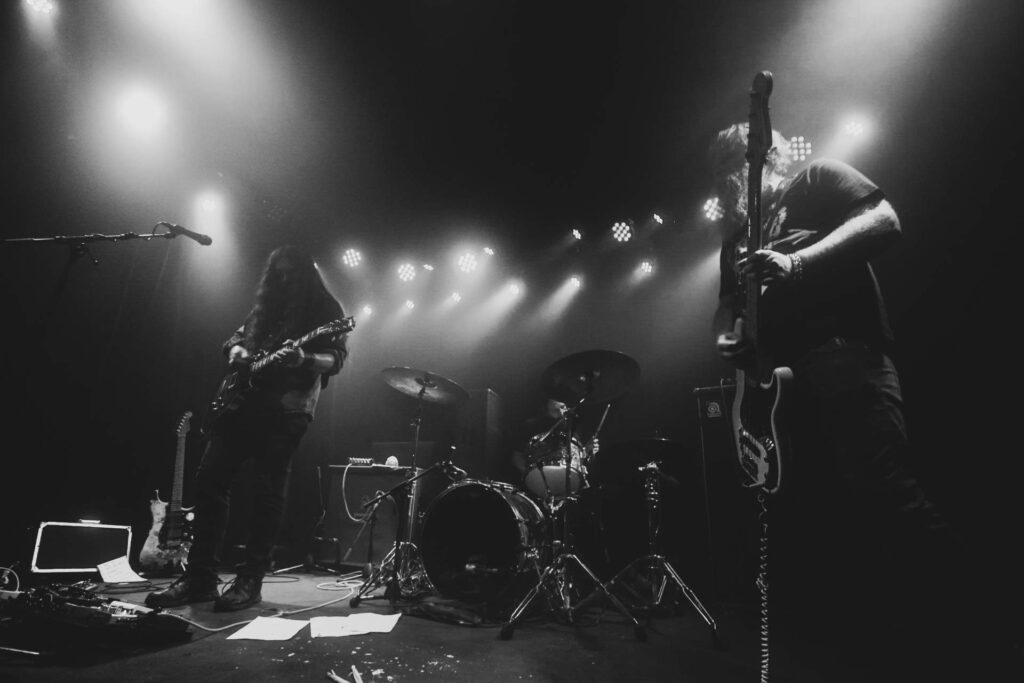
“We like to push things to the max, making our records not just something you listen to, but a full experience.”
‘Damned to the Depths’ is an incredibly heavy and personal album for you guys. What was that first conversation like, when you decided to take all that grief and channel it into the music? Was it a difficult choice, or did it feel like the only way you could process everything that was happening?
Paul Crick: I think I was in Morocco when Lex first told me about his loss. He called me, and I could hear it in his voice straight away—that heavy silence that sits between words when someone is carrying pain. Even though I was far away, I felt it. I could almost see what he was going through. As you get older, you come to realize that life inevitably brings these moments, moments when people leave us in different ways, and you’re left to carry both the memory and the absence.
At the time, we already had ‘Golden Miles,’ and we were tossing around other riffs and fragments. Then Lex sent me the intro to ‘Is There All That Is?’ and I just instinctively sent back, “it has to go like this: ba ba ba ba bump.” Somehow, from that tiny exchange, everything else seemed to fall into place. That song felt different. It wasn’t just another track; it was a real push into the unknown for us, and in many ways it set the tone for everything that followed. Every other song we wrote after that had to measure up to it, or it simply didn’t belong on the album.
For Lex, writing became a kind of release, a way of making sense of the weight he was carrying. As he began to shape Acid in the Blood, it became clear that the music was turning into something bigger than just a collection of songs. Piece by piece, the album revealed itself as a journey through grief and loss, raw, unflinching, but also cathartic.
What struck me most was how naturally it unfolded. None of it was forced. The songs, the lyrics, even the artwork—they all seemed to lay themselves out in front of us, as if they were meant to be. What began as a deeply personal struggle became something we could channel together, and ultimately something that could resonate with others. In the end, that’s what music has always been about for us: finding light in the darkness and turning pain into something that speaks, heals, and connects.
Although we sometimes throw things at each other in rehearsal, all in good fun, or try to make someone else lock up at the end of the night, at heart we’re an amazingly supportive trio. We’ve been together for over a decade now, working hard to spread the gospel of loud music, which means we’ve also lived through the industry’s trials and tribulations: hard work, late nights, hard floors, and all the rest of it.
Outside of the band, we all work and have families, which makes things complicated. Sure, we’d love to rent a castle in the south of France for six months to record the next album, but the industry just isn’t like that anymore. When one of us hits a rough patch, the others always step up. During some of the more emotional times we faced, the support was immediate, and once we realized that turning those experiences into music actually helped, it became the foundation of the album.
The songs, the cover artwork, the lyrics, the studio experiments—it all just laid itself out like it was meant to be. We’re thrilled that the end result is connecting so deeply with our fans.
The press release mentions a new prog-rock vibe, with nods to bands like Pink Floyd and King Crimson. How did you guys find that balance between your signature riff-heavy sound and these more intricate, structured arrangements?
From a sound perspective, we’ve always flown a pretty big Pink Floyd flag. You can hear it in Dripping from the Eye of the Sun. What we’ve never really had is the Richard Wright element. I doubt we’ll ever bring a keyboardist on stage, though it’d be nice to have an extra pair of hands. Lex already has his hands full juggling sample triggers, pedal settings, and all sorts of stuff, especially when we play the new material live.
The good news is, we can reproduce the album live. We’ve played most of it at our two launch shows, and we may even bust out ‘The Mourning Sea Pt. 4’ or ‘Pt. 7’ on stage. Those require acoustics or Mellotron, but I love how they open up live. Lex really gets to stretch out his voice, and honestly, those songs hit even harder on stage than they do on the record.
The King Crimson thing? That’s down to the more offbeat arrangements. We didn’t feel we had to write eight neat little four-minute songs with three verses and a solo. If a track needed a slow, synth-drenched transition with no drums, we did it. ‘The Mourning Sea Pt. 6’ is probably the most “Seedy” track of the lot, but Tony expanded it with synths, adding some surprises just like life does.
We’re lucky to have a sound, but equally lucky to be able to mess with it and keep people guessing. Personally, I’ve always loved it when bands I admire throw me a musical curveball. It makes the music last longer. If you fall in love with a record too quickly, you burn out on it just as fast.
The title and the whole concept for the album came from that cinematic moment with the swans and ducks. Can you tell us how that ended up becoming the central metaphor for the record?
The lyrics are central to dealing with the uncertainties of life. Lex felt so strongly about the experiences behind them that he even included an interview in the deluxe edition to unpack the meaning. The “duck moment” gave us the title, and the cover art from Michel Henricot sealed the deal.
Henricot’s paintings are incredible. Lex actually owns some originals, including the one on our cover. His figures, wings, light beams, and surreal landscapes perfectly capture the in-between spaces where life and death, waking and dreaming, meet. It fit the themes of the album like a glove.
The music reflects the same ideas. Synths, acoustic guitars, and even Lex’s Fender VI on ‘Acid in the Blood’ (to represent the breathing machine) all tie into that concept. That single moment really did unlock the whole album.
Tony Reed has produced all your albums, but this one feels different. Did he take on more of a collaborator role this time?
Absolutely. This time, Tony was more like a fourth band member. We had ideas about starkness and dynamics, but Tony went beyond just engineering and overdubs. He helped construct parts, solve problems, and shape the instrumentation. He’s kind of our George Martin.
Usually we just throw him a vibe, and he gets it immediately. He’s got that rare combination of technical chops and musical instinct. He’ll suggest things that sound small at first but totally elevate the song. Plus, he’s always up for nerdy chats about XTC, The Cars, retro drum machines—you name it. Every time we work with him, we learn something new.
‘The Mourning Sea’ suite sounds like the emotional heart of the album. How did you go about building a seven-part piece that journeys from grief to hope? And where did that J. Krishnamurti sample come from?
Like the song, the story of building it is long. It started as ‘Lex’s New Song,’ with multiple sections tied to a central idea. We’d also been messing around with the Mellotron and stumbled onto what became ‘The Mourning Sea.’ Slowly, all these fragments merged into a narrative.
‘Pt. IV’ came from a rough iPad demo I sent Lex, which we worked out on acoustic guitars. When he landed on the opening line, we knew we had something. ‘Pt. VI’ had to feel like resolution, sunlight breaking through. ‘Pt. VII’ was another iPad sketch, built on acoustic, Mellotron, and bass.
The ‘Krishnamurti’ sample brings the whole album into focus. His exploration of fear wasn’t about self-help gimmicks but about seeing fear directly so it dissolves. That tied into our themes of grief, uncertainty, and ultimately hope. He’s a fascinating thinker and was mates with Aldous Huxley, which makes him even cooler in my book.
With all these prog-influenced structures, how will you bring the album to the stage? Stick to the studio arrangements, or leave room for jams?
Ha! That’s the big question. The arrangements were written to sound great live, but we definitely want to capture the nuances too. We can play the acoustic parts, and Lex’s vocals push things into another dimension. The final track works with Mellotron and guitar, but we’ve also used it as a closing sample live, which gives the show this strange sense of closure.
Bass was a particular challenge for me. We recorded it differently this time, with an old Acoustic bass head, no cab, and foam under the strings for a starker, colder tone. Live, I have to balance that stripped-down feel with keeping the sound thick and precise.
We follow the album pretty closely live, but since it already has a jam-like flow, there’s always room for surprises. And knowing us, we’ll get restless and start stretching things soon enough.
The album ends on a hopeful note. What does that resolution mean for Seedy Jeezus going forward?
It means we can chase different goals and slide between rock, freak-out, prog—whatever we feel like. We’ve always wanted to keep developing as a band, and we already have most of the next album written, plus sketches for the one after that. We have shows in Sydney, Newcastle, Castlemaine, Geelong, Melbourne, Launceston, and Hobart coming up, some with our good mates Earthless, which is always lots of fun.
We also have side projects bubbling away. It’s going to be a busy time, but the response from fans worldwide has been amazing. The friendships we make through music mean the world to us. And as you can see from our deluxe editions, we like to push things to the max, making our records not just something you listen to, but a full experience.
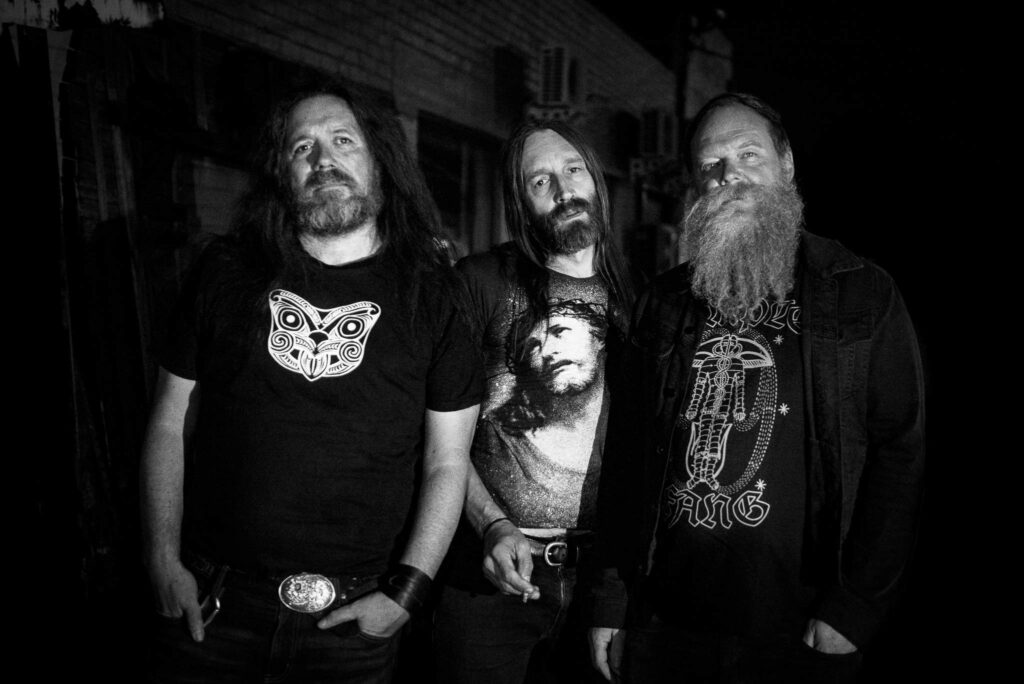
And finally, if you stopped in my little town, what records would we spin together?
Oh, plenty. Right now:
Temple Fang – ‘Lifted from the Wind’: Jevin, Dennis, and co. have really found their thing. Extended, tribal, sonic enlightenment. We played them in Germany, and they were everything we hoped for.
UFO – ‘Phenomenon’: Pure gold. The twin-guitar attack, ‘Space Child,’ and ‘Rock Bottom’—perfection.
Robot God – ‘Worlds Collide’: Classic stoner fuzz done right. Raff, Matt, and Tom always deliver.
White Heaven – ‘Out’: Maybe my all-time favorite. String bends, mood, snarl, hiss—Japanese psychedelia at its best.
Wishbone Ash – ‘Argus’: Criminally underrated. Gorgeous twin-guitar work, hugely influential on us.
Non – ‘Valley of the Moon’: A killer Melbourne band we love. Think Earthless with a pinch of Om and Church of Misery.
Thanks so much, Klemen, for everything you do for music and for supporting us!
Klemen Breznikar
Headline photo: Seedy Jeezus (Credit: Barry Douglas)
Seedy Jeezus Official Website / Facebook / Instagram / X / Bandcamp / YouTube
Lay Bare Recordings Official Website / Facebook / Instagram / X / Bandcamp
Echodelic Records Official Website / Facebook / Instagram / Bandcamp
